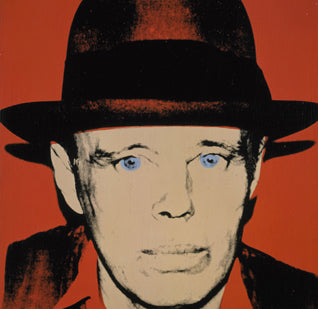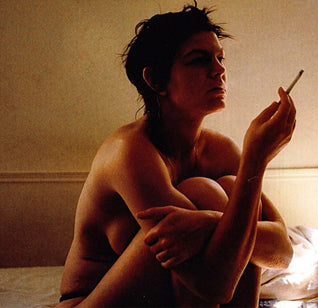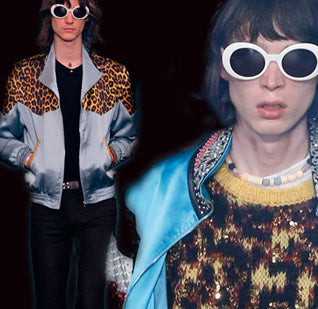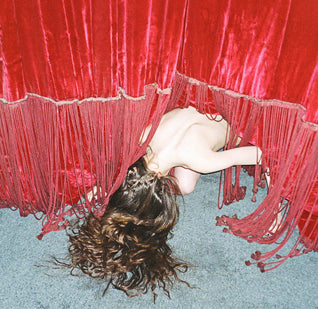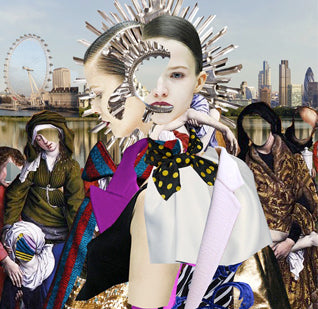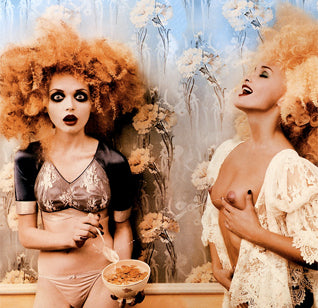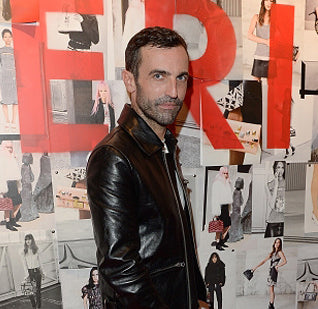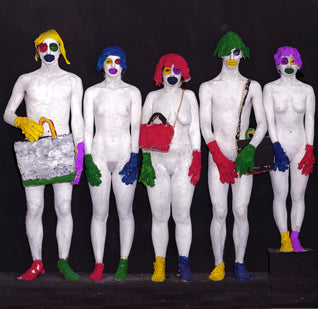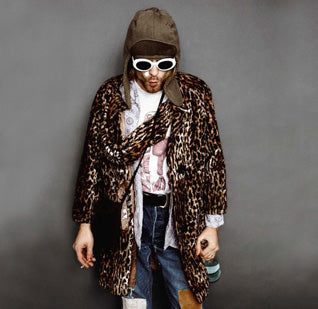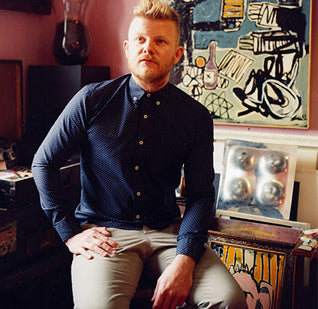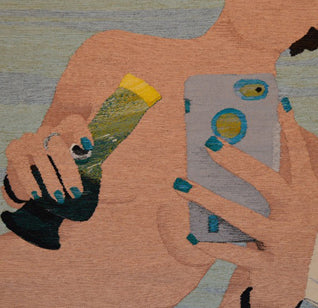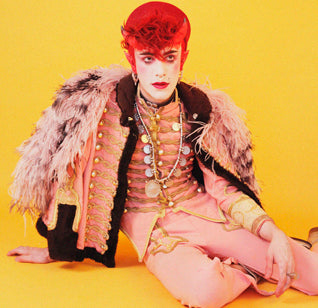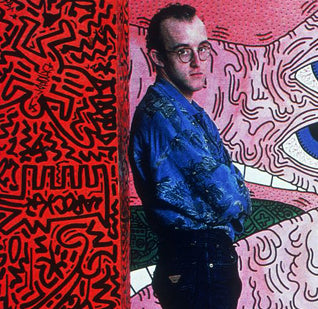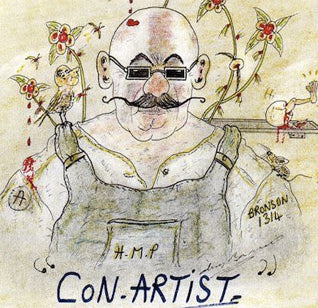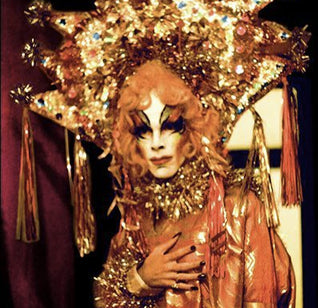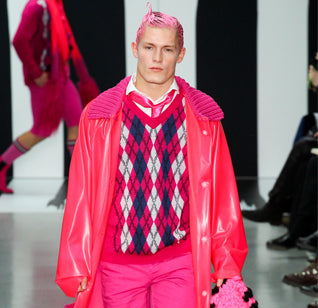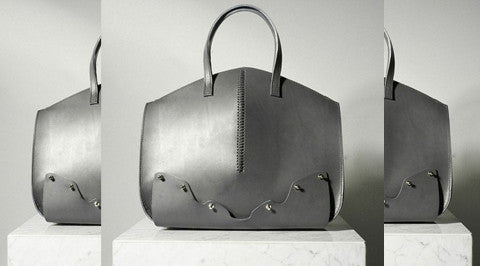THE HEDI SLIMANE EFFECT ON YVES SAINT LAURENT
How the designer remade the house of Yves Saint Laurent
by Maria Raposo
It’s 28th of June 2015 on an uncomfortably balmy summer’s evening in Paris on the closing night of the SS/16 menswear season in France’s capital city. A gang of teens storms the runway, debuting Hollywood offspring Dylan Brosnan and actress indie daring Klara Kristin, along with an array of other dazzling louche faces. Rainbow lights ripple from the surf-centric set and the sounds of the LA band Swimmers rides the airwaves climaxing with a crunching metallic explosion. Silver confetti twinkles as it dances to the ground, forming a snaking ‘S’. YSL - a constant reminder that before the days of Hedi, there was Yves.

It’s that forename that has been at the forefront of conversation since 2012, when it was scandalously axed during Yves Saint Laurent’s notorious rebrand under the direction of Hedi Slimane. As a result, the label has doubled its profits, reaching a staggering €707million. Whether you’re a fan of the brand or not, there’s no denying that Slimane is onto something.
The eponymous designer and his long-term partner Pierre Bergé, founded the house of Yves Saint Laurent in 1961. The duo met at a dinner party in 1958, and fell hopelessly in love, united through their creative talent and business savvy. The years prior had seen Yves educated alongside Christian Dior following a chance introduction by Michel de Brunhoff, the then Editor of French Vogue. “Dior fascinated me”, Yves had once said “I never forgot the years I spent by his side.”




Historically the house is synonymous for its reinvention of women’s fashion. Yves borrowed classics such as the blazer and the trouser suit from the stifled European gentleman, loosening them with wider cut trousers and sharp, tailored jackets. It was these influences that gave birth to Yves’ infamous Les Smoking jacket, the garment that pitted him against the house of Coco Chanel and established him at the time as the rival pillar of ready-to-wear. “If Chanel gave women their freedom, it was Saint Laurent who empowered them”, says Bergé.
Perhaps then, there are similarities to be drawn between Yves and Slimane themselves. Slimane headed up Dior Homme between 2000 and 2007. He merged the silhouettes of both male and female, just as Yves had done many years before. For Dior Homme under Slimane, fashion quite literally rocked with a skinny look imposed by both male and female alike, and a stretched-out silhouette with narrow black tie that was to become his signature look. This was the origin ‘Generation 2.0.’

The worlds around both designers were to also play a pivotal role in their inspiration. Yves had a firm love of America. “I adore America”, he once said. “It’s an extraordinary country. A new country.” Telling then that ‘Generation 2.0’ was to be lived out by Slimane in the U.S.A amongst the hills of Los Angeles, where he made his home following the decision to terminate his contract at Dior in 2007. Music and photography were to become his cynosure; he threw himself into the youth subcultures for which his very designs at Dior were intended. Yves too was known for his bohemian parties, fueled by psycho-stimulants, filled with the beautiful men and women who formed his clientele.
When we look at the new Saint Laurent of ‘Generation 2.0’, it’s easy to see why Bergé installed Slimane as its creative director in 2012. Stylistically, socially, historically, Hedi possessed all the ingredients for a re-imagining of the Yves Saint Laurent DNA. Slimane brings the brand up-to-date in the same way that Yves himself would have done. Music, art, subculture and lifestyle are the elements that make his vision contemporary. The of-the-future faces he casts, the underground soundtracks he plays, the latest artist enlisted to create the season’s invite; Slimane is so in touch with the zeitgeist. His clothes feel uncompromisingly cool and desirable.

What of the clothes then? It’s easy for them to be forgotten in the furore that surrounds Slimane’s decisions and the PR net that he has fervently cast. True, the clothes themselves are by no means groundbreaking, but the deliverance behind them most definitely is. You’d struggle to point out a new silhouette, cut, or even pattern, but that’s not what Slimane’s Saint Laurent is about. Instead, he re-hashes iconic subcultures, season after season. From goth to glam rock, the cults that Hedi embraces doesn’t idolize the trends of fashion, but the culture of clothing itself.
So while not everyone will be throwing their chucks on with Saint Laurent, it’s clear that Slimane has had a magic effect on the brand. Journalists will still whisper abuse from the second row, no doubt having been placed there purposefully by the brand’s tight-lipped PR. But, nevertheless, those writers will still turn up to see his shows. Because if it’s making money, it’s making sense. Fashion, at the end of the day, is a business. Sure, Slimane is not to everyone’s taste or intellectual appetite, but then again which great fashion designer ever is? Either way, Slimane remains the hottest ticket in town.








